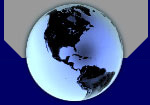After a week’s delay waiting for weather we eventually left Fremantle at the end of May after a lovely 3 month
stay at the yacht club marina. They were fairly generous in the end and gave us one month’s free berthing compared to
the advertised 14 days. The fee for visitors was a flat $20(£8) per day regardless of size, which is quite unusual. After
having changed our mind about returning to Norn Iron via the South Pacific and Chile we had to refurbish our wardrobe for
visiting tropical islands. We’ve done very little coral reef sailing and a passage back across the north Indian Ocean
would allow us to visit the uninhabited atoll of Chagos and then on to Mauritius and Reunion before returning to South Africa.
When we hatched this plan in Kerguelen it seemed very exotic and balmy compared to the Southern Ocean and wildness of the
Patagonian channels.
Our first destination was the Australian Indian Ocean Territory (AIOT) of Cocos/Keeling islands, a coral atoll that was
run like a private kingdom by the Clunys-Ross family who grew coconuts, harvested by indentured Malaysians. It’s now
administered by Oz and as its convoluted name might hint it’s a very curious place indeed. There are 3 communities on
the 3 main islands with only fleeting, uncomfortable communing between them. There’s West Island, the administrative
centre, run by white Aussies. Here everyone drives small cars, which with only about 10 kms of road must last forever. Everyone
has at least 2 jobs with the quarantine officer running the shop and married to the policeman who is also the customs officer.
Drink is at duty free prices and everything else is double the mainland price. Peter was most taken by the pointless signs
that warned of gravel roads off the single lane blacktop that runs about 4kms from jetty to village.
Then there’s Home Island where the Coco-Malays live in pre-fabricated, identical houses in neat blocks. They don’t
process coconuts anymore but the Aussie government guarantees a standard of living equal to Perth so every house has a speedboat
parked outside. They favour quad bikes over cars here for the 100-metre ride to shop or mosque. Everyone drives one including
the women in their long skirts and black Muslim headscarves. Tourists are asked to wear long sleeves and trousers to respect
local sensibilities. Then on the ferry to West island you can strip off to be in keeping with the ex-pat aussies in their
shorts and singlets. Walking Home Island’s sandy tracks you have to beware of the little old men roaring along to their
allotments, smiling a grin full of gold teeth and wearing an intricately embroidered white Muslim skullcap.
The third and lowest class of inhabitants are the yachties anchored in the lee of Direction Island, which is uninhabited.
There were only 3 boats when we arrived. Ashore there are a few feral chooks, which have obviously been abused in the past
and run a mile at the first sniff of a human. There are a couple of picnic shelters covered in name boards placed by visiting
yachts over the years. A lot of the names were familiar to us from our years of cruising. A few paths have been cleared through
the now overgrown coconut palms and on Saturdays a special ferry brings tourists to play at Robinson Crusoe for a day. Otherwise
it’s just millions of hermit crabs and mosquitoes. Aussie yachties based in Indonesia or Malaysia come to Cocos for
free health care and dole or pension claims.
Trying to get any official business done, however, can descend into farce. It’s a 2-mile windward and wet dinghy
journey to Home Island from Direction and then a 30-minute ferry trip to West Island where you need to go to collect customs
clearance and with the vagaries of the ferry timetable this takes a whole day. With everyone having 2 jobs opening hours too
are frustrating. For example the petrol pump is only open for 2 hours 3 times a week and the bank and post office are never
open on the same day.
After a fortnight of idling under the tropical sun and snorkelling among huge parrot fish and black tipped reef sharks
we upped anchor and headed north for Chagos, part of the British Indian Ocean Territories – from AIOT to BIOT - 1580
miles away.

